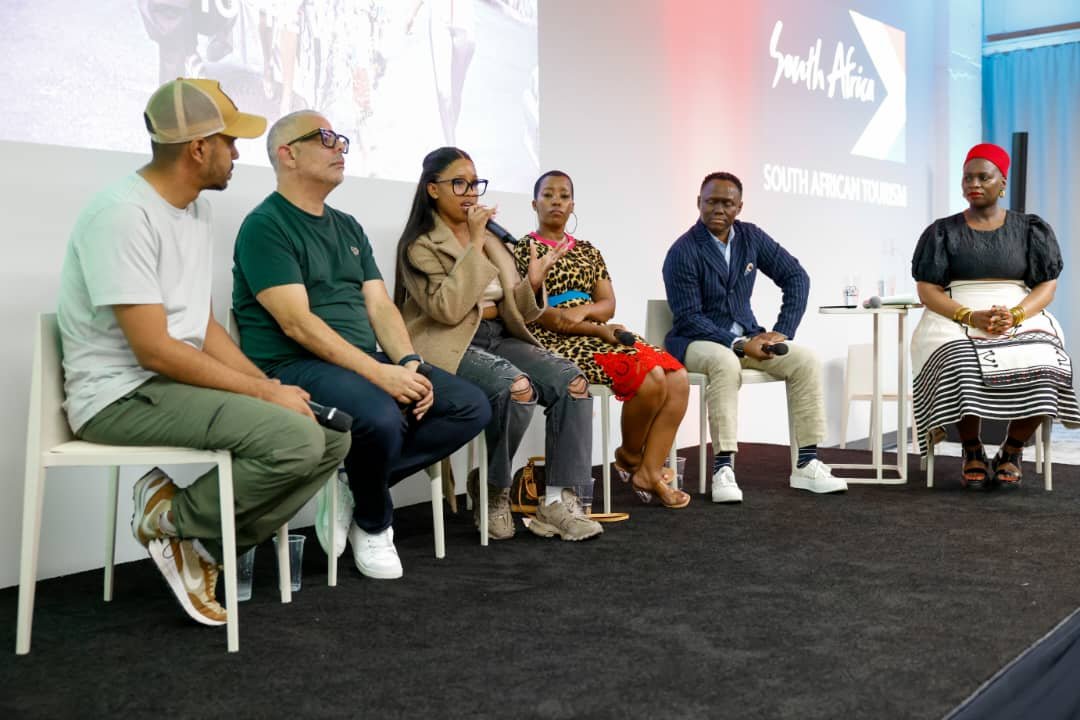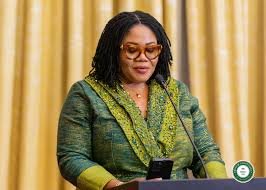News
Amapiano to the world…South Africa’s hottest new export

The distinctive sound of the log drum permeated the air as several musicians, producers and industry experts gathered in Miami to celebrate the burgeoning genre of Amapiano.
With a sound best described as a hybrid of deep house and jazz with percussive loops reminiscent of lounge music coupled with soulful vocals, Amapiano is arguably South Africa’s hottest new export, and its infectious sound continues to attract new audiences as the genre spreads like wildfire.
South African Tourism presented an industry-focused panel discussion in collaboration with Maphike Attorneys Inc., providing an opportunity for creators of this musical style to speak about the cultural impact of Amapiano and discuss the genre’s future as it continues to gain popularity worldwide.
Taking place on the eve of the inaugural Afro Nation Miami, which boasts an Amapiano stage, the panel discussion included artists Pabi Cooper and DJ AYA who were joined by several industry executives including: Yoel Kenan, CEO of Africori, Devon Peterson, Creative Director of Africori, Manaileng Maphike, Attorney at Maphike Attorneys Inc. and Jerry Mpufane, President of South African Tourism North America.
The discussion was moderated by Yolanda Sangweni, Vice President of Programming and New Content Development at NPR with opening remarks by JustinBarnette, Head of Marketing and Communications of South African Tourism North America.
The conversation dove into a wide range of topics including the cultural significance of this new music genre, the impact of its growing popularity worldwide, and the spotlight it has cast on South Africa and its people, fueling industries such as tourism in growing source markets.
Amapiano was born out of the townships of Gauteng province with a distinctive character that is rooted in another uniquely South African musical style, Kwaito.
The South African youth who grew up on the sounds of Kwaito have led the creation of Amapiano, a musical style that is distinctly characterized by its use of the log drum which serves as the sound for the baseline. But while Kwaito reflected the struggles of apartheid, Amapiano boasts a more optimistic tone of a young generation that strives to be unapologetically South African.
In fact, in South Africa Amapiano has become a culture with its own fashions and styles and its own speech and dance form gaining mainstream popularity.
“As Amapiano makes its way around the world it’s another way in which South Africa’s history and culture demonstrates its global influence,” said Jerry Mpufane, President of South African Tourism North America.
“Amapiano is born out of the soul of South Africa, and they say one of the best ways to experience it to its fullest is to be where the music is. So as this genre continues to captivate global audiences, we hope it inspires them to visit South Africa and learn about the history and culture that influenced the creation of Amapiano,” he added.
Today, Amapiano music can be found in clubs, bars, and music venues across South Africa but there are certain places where one might come across the artistes who have been instrumental in Amapiano’s rapid rise to the world stage.
Travelers arriving in Johannesburg can head south to Soweto, the birthplace of Kwaito.
Several of the panelists emphasized that understanding South Africa’s history allows one to better understand how South Africa’s freedom became intertwined with the musical styles that gave the people a platform to express their experiences through sound, movement, and lyrics.
In Soweto there are plenty of venues to choose from where one can regularly hear the sounds, or even catch a performance by local Amapiano musicians, like Amapiano pioneer and record label owner, Kabza De Small, Njelic or Kamo Mphela, at venues such as Konka, Zone 6 or Disoufeng.
Pretoria, known as the birthplace of Amapiano, is home to a number of influential Amapiano musicians such as Pabi Cooper, Focalistic, Chicco, Mellow and Sleazy (who make up a collective called Pitori Super League) and the likes of Vigro Deep.
In Pretoria, one can enjoy the latest and most popular new hits at high-end lounge/restaurant Ayepyep which boasts two locations in the city (and a third now in Cape Town) and night club, ZanZou.
Visitors can experience the authentic sounds at festivals including Straata Nation Address and Mamelodi’s outdoor music festival at Moretele Park that draws thousands of revelers annually.
While the best place to experience Amapiano is in its birthplace of South Africa, the genre has made its way to clubs, festivals, and bars worldwide, a testament to how infectious the sounds truly are. As a relatively young underground genre, Amapiano could have easily been stifled by the onset of the pandemic but instead it flourished.
The artists noted that Amapiano originated in home studios so it is faithfully poetic the genre would reach audiences at home through social platforms while millions of people were on lockdown.
Its popularity was largely driven by viral dance challenges, building an appetite for the genre internationally.
Amapiano boasts a unique representation of women with many of the genre’s biggest names like Uncle Waffles, Pabi Cooper, TXC and Kamo Mphela, paving the way not only for South African women creators but creators from across the diaspora.
It’s not enough to say the women are influencing Amapiano as they are in fact defining it through the connection of movement and energy in the dance styles.
The future of Amapiano is one full of possibilities as the young artistes and creators continue to put their unique stamp on the genre and bring it to the world.
News
‘Stop shielding perpetratorsof Gender-Based Violence’By Spectator Reporter

THE Minister of Gender, Children and Social Protection (MOGCSP), Dr Agnes Naa Momo Lartey, has called on traditional authorities, religious leaders and community influencers to stop shielding perpetrators of gender-based violence and allow the law to work.
She said too many cases were being buried at the community level, with abusers protected while victims were pressured into silence. This, she stressed, must end.
Dr Lartey made the call on Tuesday at the national launch of the 2025, 16 Days of Activism Against Gender-Based Violence campaign, held at the Kaneshie Main Station in Accra.
This year’s campaign, observed globally from November 25 to December 10, is on the theme: ‘Unite! End Digital Violence Against Women and Girls.’
It highlights rising incidents of cyberbullying, online stalking, image-based exploitation and other forms of technology-facilitated abuse that disproportionately affect women and girls.
The minister urged the media to use their platforms to condemn abuse and intensify education, noting that no person should “die in silence’’ in a society that values dignity, equality and the principles of Sustainable Development Goal 5.
She also encouraged women, girls, men and boys to report any form of abuse, assuring the public that support services were available to all, regardless of age or social status.
Dr Lartey described gender-based violence as one of the most pervasive human rights violations in Ghana. She referenced a 2016 Domestic Violence Survey showing that 27.7 per cent of Ghanaian women have experienced domestic violence, as well as a 2014 Demographic and Health Survey which revealed that 32 per cent of girls aged 15–24 believe wife beating was justified—an indication of harmful societal norms.
Calling the situation “unfortunate and sad,” she stressed that the nation must dismantle cultural beliefs that excuse or normalise violence.
Outlining government actions, Dr Lartey announced that Cabinet has approved the revised National Domestic Violence Policy, while the updated Domestic Abuse Bill and its Legislative Instrument were being finalised by the Attorney-General’s Department.
She also disclosed plans to operationalise a national shelter in Accra and begin constructing the 16 regional shelters promised to strengthen protection systems for survivors.
Additionally, the ministry has trained 200 market leaders as paralegals and 100 professionals, including psychologists, medical workers and legal experts, to support victims with referrals and counselling.
UNFPA Country Representative, Dr David Wilfred Ochan, reaffirmed the agency’s support for Ghana’s efforts. He unveiled a nationwide initiative titled “16 Stations, 16 Routes, 16 Destinations,” which will use the country’s public transport system to raise awareness on gender-based violence.
In partnership with the Ghana Private Road Transport Union (GPRTU), the initiative will promote stickers, public announcements, training and codes of conduct to ensure that transport stations become safe spaces where commuters, traders, porters and young people can access information and hotline services to report or prevent abuse.
Join our WhatsApp Channel now!
https://whatsapp.com/channel/0029VbBElzjInlqHhl1aTU27
News
Safeguard religious rights ofstudents – CRI urges studentsBy Spectator Reporter

CHILD Rights International (CRI) is urging the government to adopt a firm and comprehensive national policy to safeguard the religious rights of students in secondary schools, insisting that no child should be denied education or the freedom to express their faith.
In a statement issued on Thursday in Accra, the organisation said the recent controversy involving Wesley Girls’ Senior High School highlights deep-seated gaps in how children’s rights were upheld within the country’s long-standing educational structures.
According to CRI, the incident underscores the need for Ghana to reassess the relationship between school traditions and the constitutional rights of students.
The group emphasised that the right to education and the right to religious expression were fundamental, and must be reflected consistently in rules and practices across all schools.
Additionally, CRI noted that many well-known mission institutions such as Holy Child School and St. Louis Senior High School operate on religious foundations that have shaped their administrative cultures for decades.
These differ significantly from state-established schools like Ghana Senior High School in Koforidua, Tamale Senior High School and Achimota Senior High School.
This contrast, CRI argued, raises an important national question and what policy framework has guided these mission schools since their incorporation into the public system?
Although the government has declared all such schools secular, they continue to function as government-assisted institutions, maintaining a hybrid structure that leaves them neither fully autonomous nor entirely under the Ghana Education Service (GES).
This unclear arrangement has led to inconsistent rules on discipline, conduct and religious expression from one school to another.
CRI warned that the absence of a unified and enforceable national policy leaves significant gaps in the protection of children’s rights.
While rights may be universal, the group emphasised that their protection depends on strong and clearly defined state regulations.
The organisation further stated that the State has yet to assume full regulatory authority over the schools it supports financially. As a result, key administrative and disciplinary decisions often remain at the discretion of individual school authorities, creating uneven standards nationwide.
For the rights of children, particularly their right to practise their religion to be fully realised, CRI believes the government must move toward full regulatory ownership of all schools it funds or classifies as public.
Without this, tensions between deeply rooted school traditions and constitutional freedoms are likely to persist.
The statement stressed that once a school admits a student, it takes responsibility not only for their academic development but also for respecting their identity, including their religious background. Therefore, no child, CRI insists, should be prevented from practicing their faith within the school environment.
Moreover, the organisation called for the establishment of clear national standards that guide schools on accommodating religious expression without compromising discipline or institutional order.
It also urged the government to strengthen safeguarding systems with firm oversight and routine monitoring to ensure that children’s rights are protected based on national law, not historical customs or administrative discretion.
CRI admonished the government to clarify the official status of government-assisted mission schools to ensure that the rights of all students are upheld consistently across the country.
By Spectator Reporter
Join our WhatsApp Channel now!
https://whatsapp.com/channel/0029VbBElzjInlqHhl1aTU27







